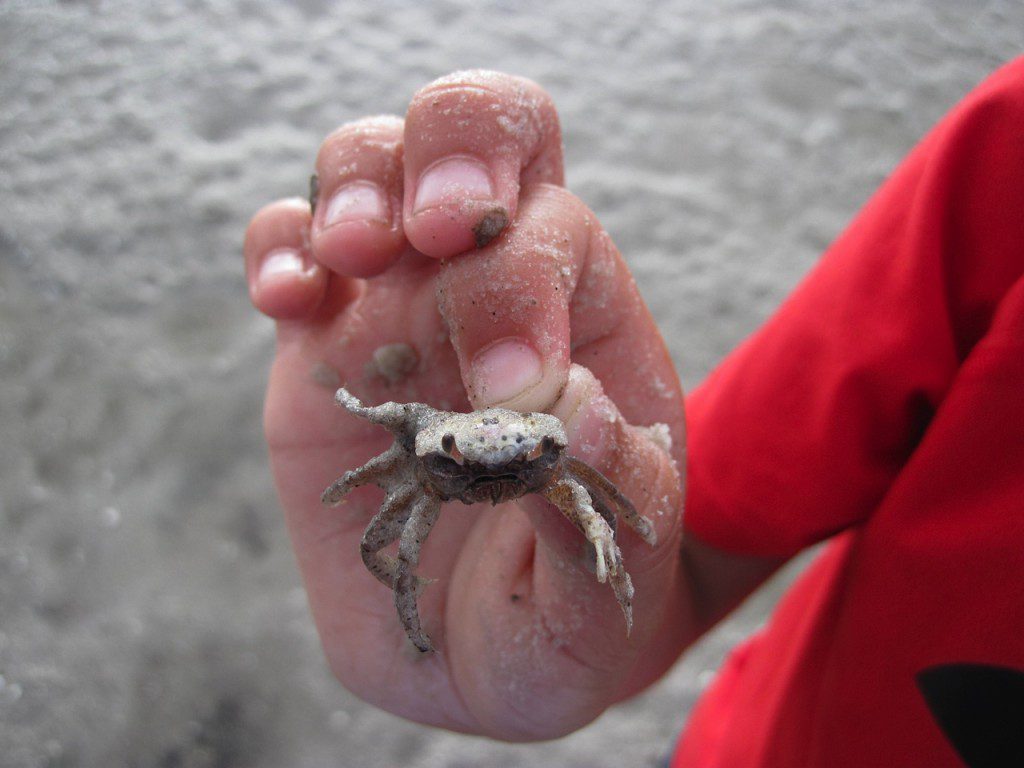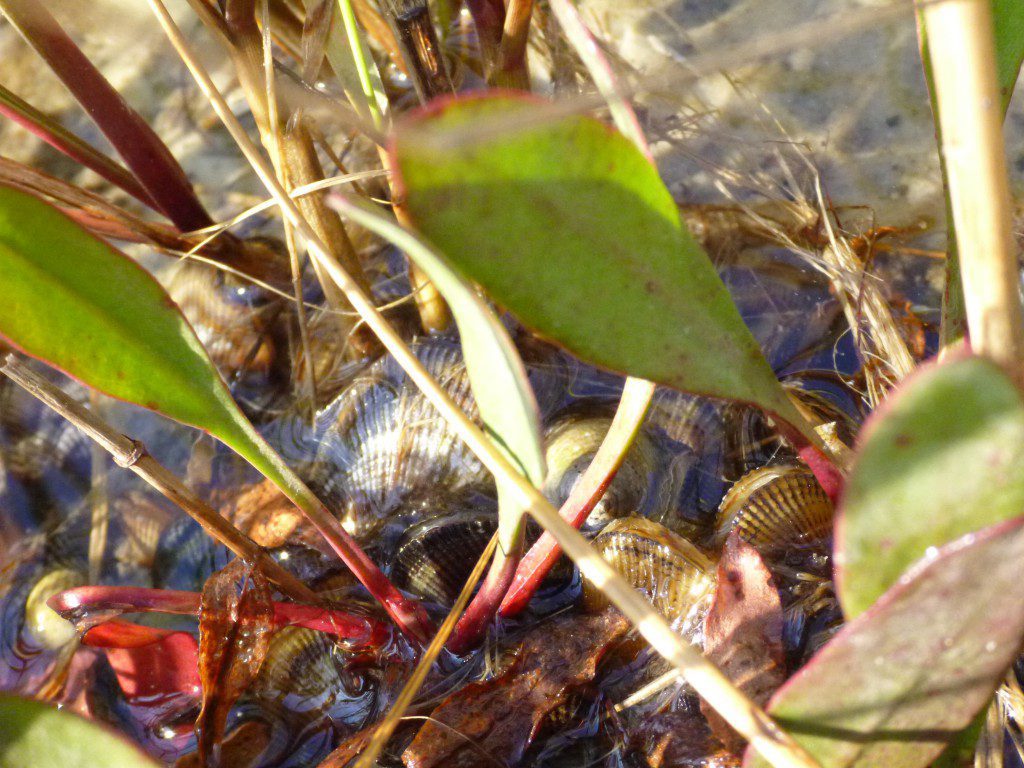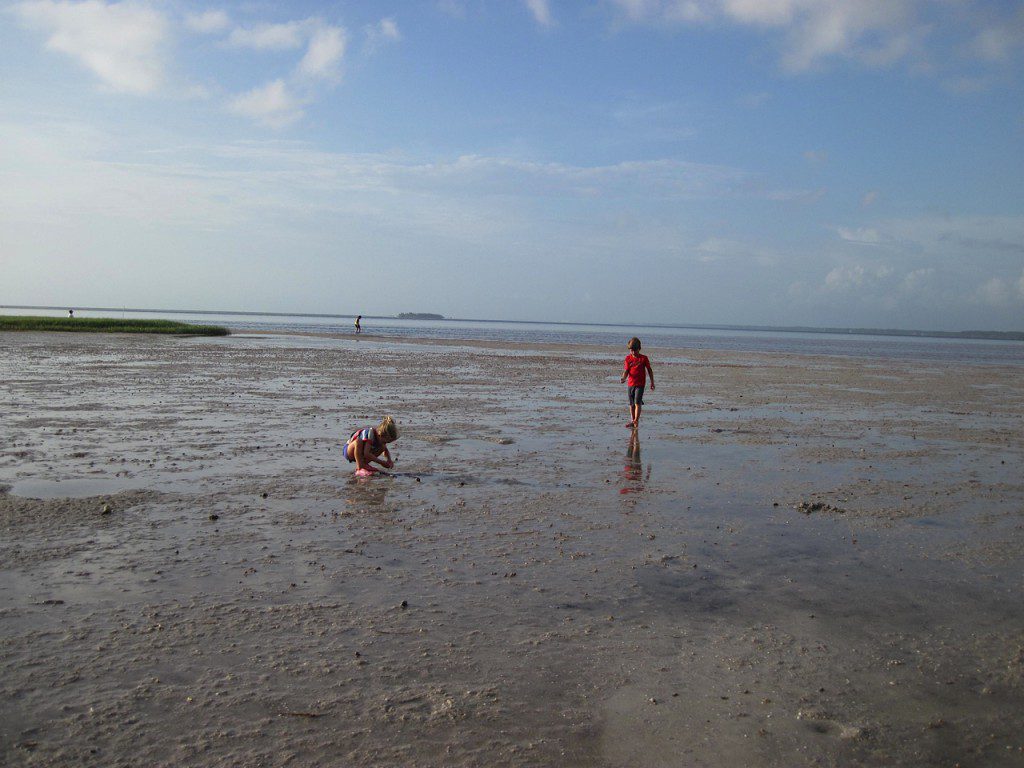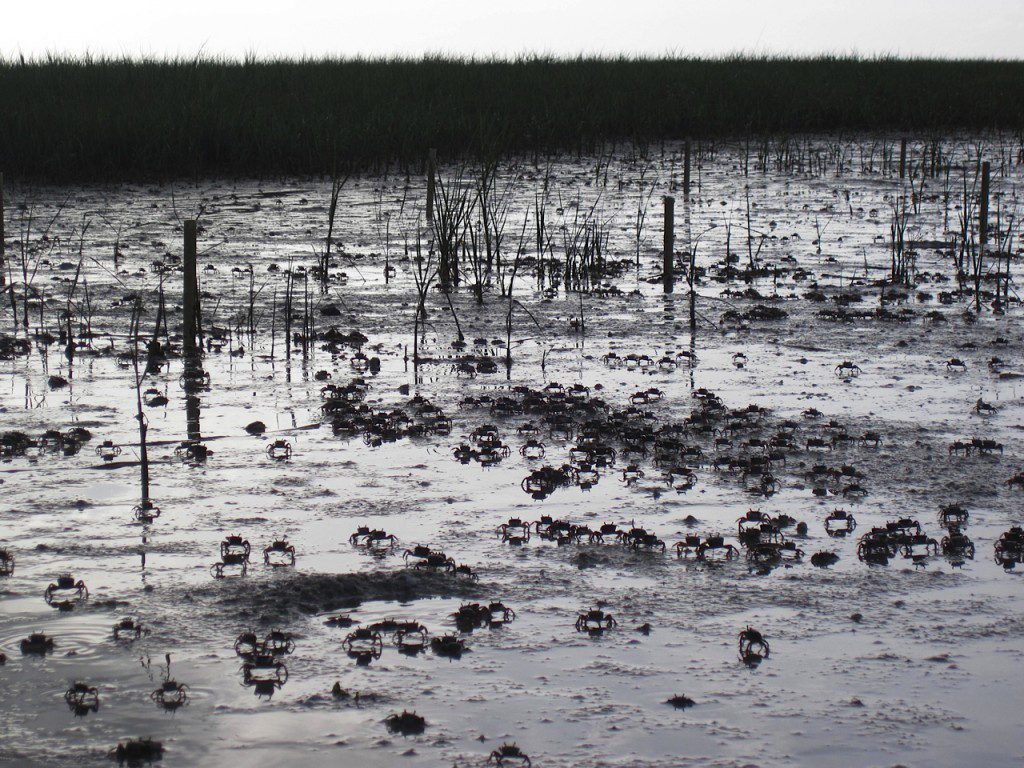In Randall’s last post, she looked at whether genetic diversity within the salt marsh foundation species– smooth cordgrass- made for a stronger marsh (and by stronger, of course, we mean better able to shelter yummy blue crabs for people and sea turtles). In today’s post and video, Randall examines how the combination of plants and animals around cordgrass- the species diversity of a marsh- might play a role as well.
Dr. Randall Hughes FSU Coastal & Marine Lab/ Northeastern University
 Even though salt marshes often look like one big sea of green in the intertidal, there are plants and animals other than marsh cordgrass around. And even though I devote a lot of effort to understanding the effects of diversity just within cordgrass, these other species are also important – no marsh is an island. (Well, actually they are, but you get the analogy.)
Even though salt marshes often look like one big sea of green in the intertidal, there are plants and animals other than marsh cordgrass around. And even though I devote a lot of effort to understanding the effects of diversity just within cordgrass, these other species are also important – no marsh is an island. (Well, actually they are, but you get the analogy.)
 So who is important, and why? There are at least two animals that can be classified as “friends” of cordgrass – fiddler crabs and mussels. Fiddler crabs create burrows that allow oxygen to get down in the sediment, and cordgrass roots appreciate that oxygen. The fiddler crabs also aerate the sediment during their feeding, and they can excrete nutrients that the plants use to grow.
So who is important, and why? There are at least two animals that can be classified as “friends” of cordgrass – fiddler crabs and mussels. Fiddler crabs create burrows that allow oxygen to get down in the sediment, and cordgrass roots appreciate that oxygen. The fiddler crabs also aerate the sediment during their feeding, and they can excrete nutrients that the plants use to grow.
As an aside, fiddler crabs are also irresistible for kids (and maybe adults too!).
Mussels aren’t quite as charismatic as fiddler crabs, but they like to nestle around stems of cordgrass, and the byssal threads that they use to attach to one another and to the sediment can help prevent erosion. In addition, they excrete nutrients and other organic material as a byproduct of their filter-feeding, and the plants take advantage of these nutrients.

While investigating the relationship between mussels and marsh cordgrass, Randall’s graduate student, Althea Moore, noticed that mussels also seemed to often accompany sea lavender in the marsh. This led to a separate study for Althea.
So who is MORE important, mussels or fiddler crabs? We did an experiment to test that question, or really, to test whether having mussels and fiddler crabs together is better than having just one or another. The answer? As with much in ecology – it depends. For one, it depends on what you measure. If you look at the number of cordgrass stems, then fiddler crabs are the better friend – cordgrass with fiddler crabs does better than cordgrass without fiddler crabs, regardless of whether you have mussels or not. But if you look at how tall the plants are (another important characteristic in the marsh), then mussels are the better friend, but only when fiddlers aren’t around. And if you look at the amount of organic content, mussels increase organic content at the sediment surface, whereas fiddlers increase it belowground. In the end, the take-home message is that the more things you measure about the marsh, the more important it becomes that you have both mussels and fiddler crabs in order to be the “best”.
 In the process of doing the experiment I described above, Althea (my graduate student) noticed that when she was out in the marsh, she often found mussels in and around sea lavender (Limonium) plants more often than she found them around cordgrass. She became interested in finding out whether the mussels benefit the sea lavender, the sea lavender benefits the mussels, or a little bit of both. She’s still working on the answer, but it just goes to show that although we often tend to focus on who eats who (think Shark Week) or who can beat who (Octopus vs. Shark, anyone? Or, for kids, there’s always Shark vs. Train – a favorite at my house!), there are just as many instances of species helping one another (not that they always intend to).
In the process of doing the experiment I described above, Althea (my graduate student) noticed that when she was out in the marsh, she often found mussels in and around sea lavender (Limonium) plants more often than she found them around cordgrass. She became interested in finding out whether the mussels benefit the sea lavender, the sea lavender benefits the mussels, or a little bit of both. She’s still working on the answer, but it just goes to show that although we often tend to focus on who eats who (think Shark Week) or who can beat who (Octopus vs. Shark, anyone? Or, for kids, there’s always Shark vs. Train – a favorite at my house!), there are just as many instances of species helping one another (not that they always intend to).
Of course, it’s not just animals helping (aka, facilitating) plants – plants can help other plant species to. We’ve shown through a series of experiments that cordgrass benefits from having its tall neighbor needlerush (Juncus roemarianus) around, but only if the snails that like to graze on cordgrass are also present. Nothing is ever as simple as it looks in the marsh…
Music in the piece by Revolution Void.
This material is based upon work supported by the National Science Foundation under Grant Number 1161194. Any opinions, findings, and conclusions or recommendations expressed in this material are those of the author(s) and do not necessarily reflect the views of the National Science Foundation.


